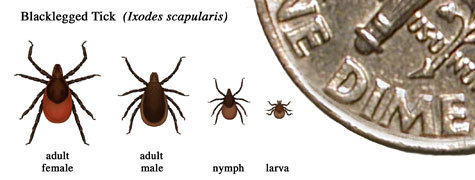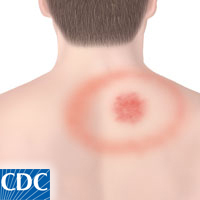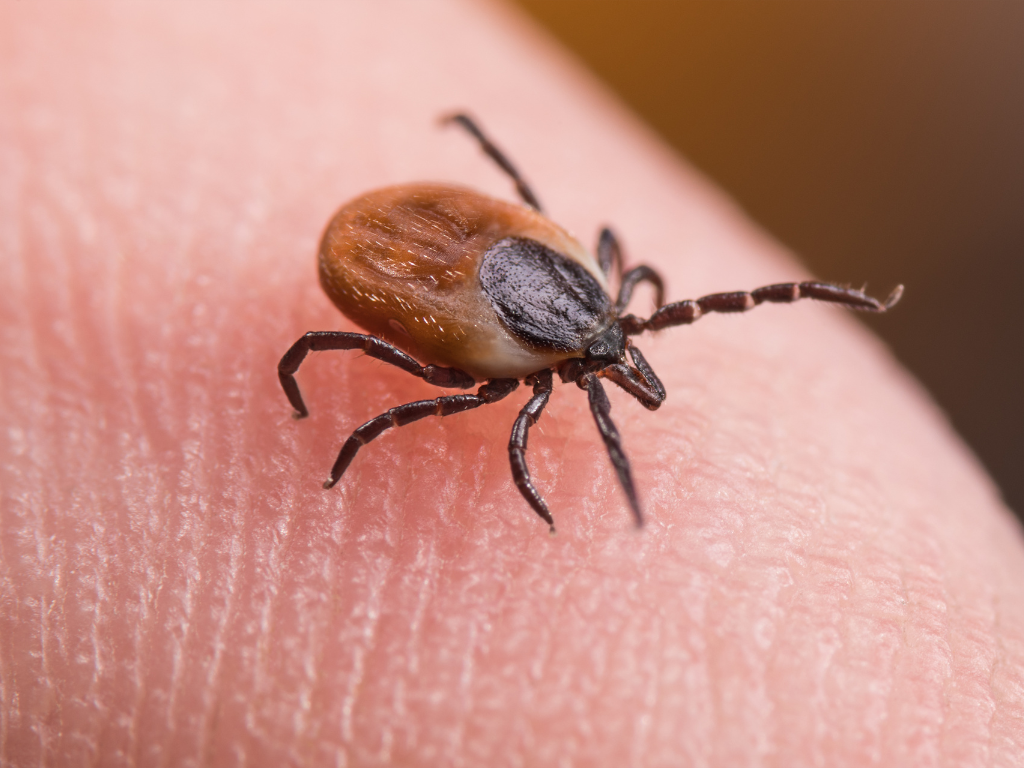In 2023 Anne Arundel County saw 205* reported cases of Lyme disease, compared to 126 cases in 2022.
*Preliminary numbers, subject to change.
How is it spread?

Lyme disease is spread to people from a tiny tick the size of a pinhead known as a blacklegged or deer tick. The tick is hard to see because it is so small. Many people with Lyme disease never even see or feel a tick on their body. In most cases, the tick needs to be on a person for at least 24 hours before the person becomes infected. These ticks are most often found from May through October in tall grass, brush and wooded areas. But they can be present, in smaller numbers, throughout the year. Pets can bring ticks into the house. Mice also carry ticks.
What are the symptoms?
Symptoms usually start within a month of being infected. About 75 percent of patients with early Lyme disease will have a skin lesion in the first one to four weeks of infection. Some get a “bull’s eye rash” that has a red center. Other early symptoms may include fever, joint and muscle pains, headache, or feeling tired. Lyme disease is hard to diagnose because the symptoms often mimic other diseases. Special laboratory tests may be needed to make a diagnosis.
If left untreated, the infection can lead to serious illnesses of the heart, joints and nervous system. Lyme disease may cause birth defects or miscarriages.

How can it be prevented?
- Wear light-colored, long sleeved shirts and pants that you can tuck into your socks when working or walking in areas likely to have ticks.
- Spray arms and legs with an insect repellent containing DEET (up to 30% for adults, 10% for children) or picaridin. For occasional exposure, adults can spray clothing with an insecticide, permethrin, for more protection. Use repellents and insecticides as directed by the manufacturer. Follow your doctor’s advice for extended use or for use on children, during pregnancy or if you have skin problems.
- It is very important that parents conduct a thorough inspection of children. Look along the hairline, in the hair and ears, and where clothing fits snugly. Because ticks can spread other serious illnesses, a whole body inspection every three to four hours is safest when in grassy or wooded areas.
- After coming indoors, wash and dry clothes as soon as possible, preferably at a hot temperature. Wash off insect repellent remaining on the skin.
- Remove leaves, brush and tall grass around houses, pathways and gardens.
- Treat and discourage infestations of mice in or near houses.
If you find a tick
- Remove the tick right away, but do not touch it with your bare hands. Use tweezers to grip the tick behind its head and as close to the skin as you can. Gently pull it off. If tweezers are not available, use your fingers wearing gloves or a tissue. Do not smash or burn the tick. Tick Identification is available through the Maryland Department of Agriculture (MDA).
- After removing the tick, wash your hands with soap and water or waterless alcohol-based hand rub. Clean the tick bite with an antiseptic such as iodine scrub, rubbing alcohol, or soap and water.
- Mark a calendar on the date you found the tick and watch for symptoms for at least a month.
- If a rash develops or you experience other symptoms within 3 to 32 days, call your physician immediately.

For more information on Lyme disease, call the Anne Arundel County Department of Health at 410-222-7254.

